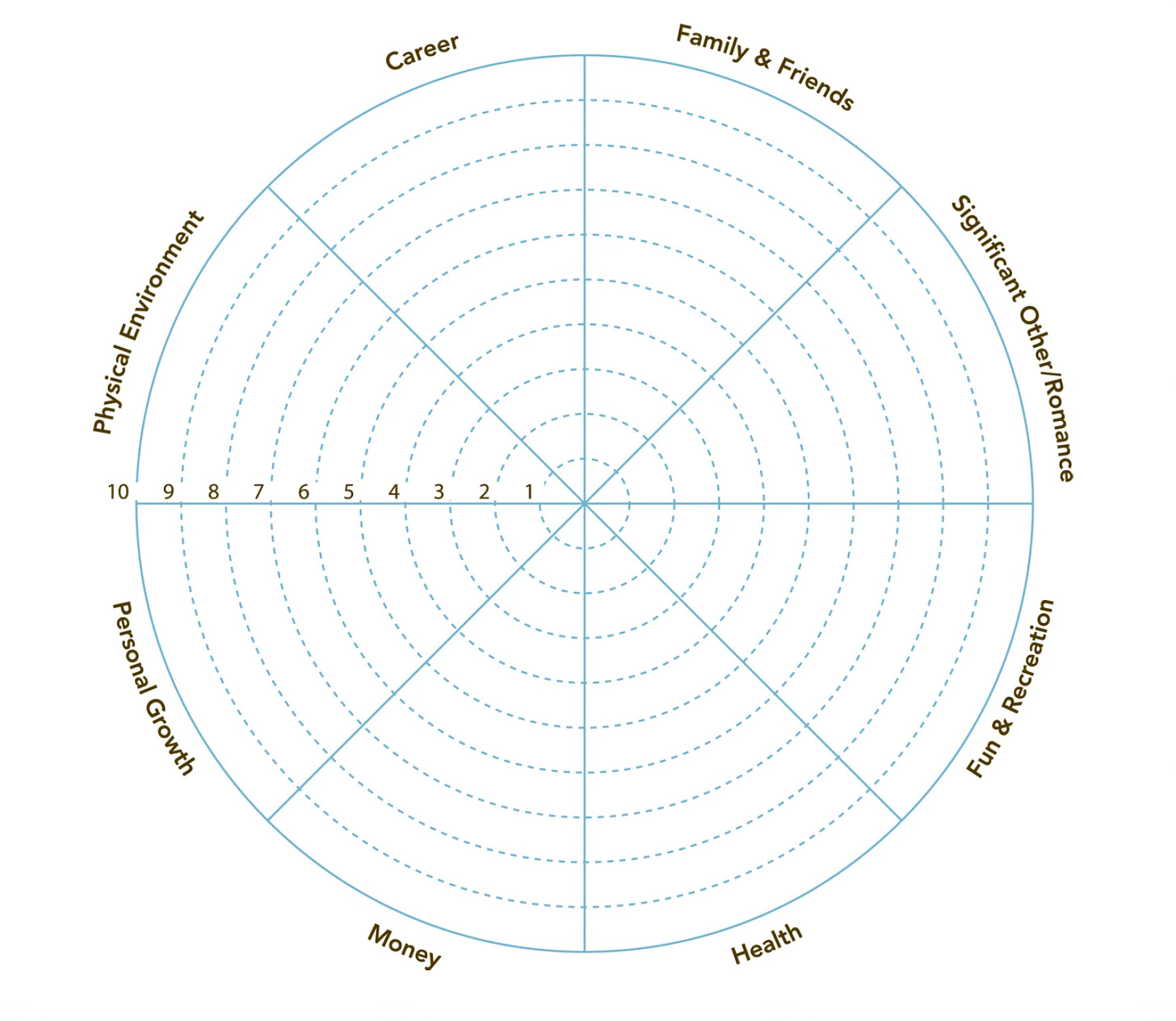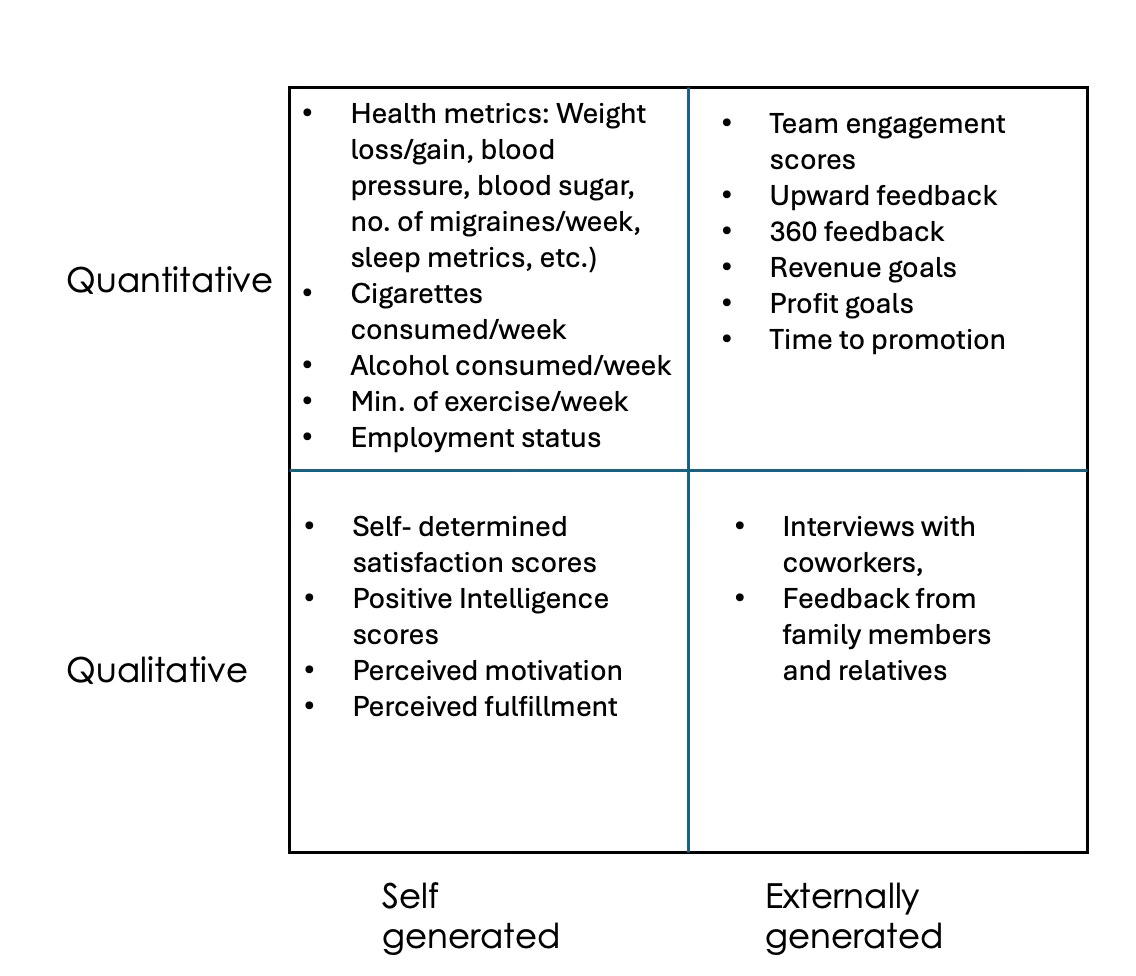How Do I Know if I Am Growing?
Early discussions about the right metrics for tracking personal and professional growth make a big difference
Figuring out how to measure personal and professional growth throughout a coaching relationship is conceptually straightforward. Start out establishing goals with your coach, and then, periodically and at the end of the program, revisit those goals and determine whether you’re on track to achieve them, right? My experience in coaching tells me that, while simple in concept, making the measurement of growth meaningful and insightful is as much art as science. Since personal and professional growth is the essential PURPOSE of engaging a coach, it feels right to explore this topic a bit in my Substack.
What is Personal and Professional Growth?
Before diving into approaches to measurement, it’s useful to first explore what we are trying to measure. Personal growth is a process of both understanding yourself and pushing yourself to reach your highest potential. Professional growth is a subset of this but often measured based on company-specific goals and objectives. Growth means asking yourself who you want to become and how you plan to get there. It can involve working on new habits and hobbies, fostering new skills, and practicing new strategies to achieve your goals. While this development often starts with the very personal (for example, “What is my purpose? What are my core values? What do I find fulfilling?”), it can radiate outward and impact every aspect of a client’s life, including personal and professional spheres. It follows that measuring progress on this journey involves both quantitative and qualitative measures.
Goal-setting
Productive coaching relationships begin with the coach and client establishing an alliance that defines the relationship. This includes defining desires, norms, behaviors, boundary conditions, and expectations of both parties. It is where I work with my clients to determine the specific aspects of growth they are hoping to achieve via coaching. Even if my clients come in with a very specific request (for example, “I was laid off and need help getting organized around my job search,” or “I was recently promoted at work and need to develop a six-month plan for my new division”), I use the alliance-building session to step back and explore the whole person. I often use a simple tool called the “Wheel of Life” (courtesy of the Co-Active Training Institute) that instigates a broader discussion of the client’s current perception of satisfaction across various aspects of their life. We can mutually modify the elements in the circle; I have had clients who want to separate the “family” and “friends” categories into separate measurements, for example. Once we record the client’s assessment, I use the findings to direct the focus of our coaching relationship. I also save the findings and revisit them in our Completion session (a planned interaction at the end of the coaching program intended to take a broader view and to understand progress against the original objectives). One way to measure progress is to compare satisfaction assessments at the beginning and end of the coaching program.
A Framework for Metrics
The initial alliance meeting between coach and client is a great place to explore the range of options for measuring growth. The framework I use involves thinking creatively about qualitative and quantitative measurements (the x-axis in the accompanying graphic below) as well as where the source of data comes from for these potential measurements - either internally generated by the client or obtained from others who interact with the client (the y-axis).
For example, quantitative self-generated measurements of progress might include some of the many available “observed-self” metrics now available via a wide variety of apps - weight, sleep, exercise, sources and amount of caloric intake per day, etc.
Apps such as Apple Fitness, Fitbit, Peloton, Strava, Noom, and LoseIt make it efficient to collect consistent data that can reflect personal goals. I often have clients who shift from general statements about work-life balance to specific desired outcomes, such as wanting to experience more consistent and better sleep or losing weight over a specific period. By turning this into a monitored measurement, we create something tangible to work on and track progress against.
Quantitative, externally generated measurements include data from 360 degree feedback loops (which I conduct when requested, and which many organizations support as part of their regular performance management and talent development systems); upward and team assessments (related to but different than 360 degreee assessment tools); and traditional corporate metrics like revenue, profit, employee turnover, and the like. Qualitative, externally generated measurements of growth can include informal feedback from peers, coworkers, family members, and the like.
There are a variety of tools and approaches to taking qualitative self-generated assessments of personal progress against a set of goals. The “before and after” Wheel of Life assessment shown above is one such tool; there are many others. Shirzad Chamine’s Positive Intelligence platform has a quick self-assessment of “mental fitness” (Positive Intelligence assessment) that attempts to measure one’s sentiment at any given point in time and assign it a score, essentially turning a qualitative measurement into a (quasi) quantitative one. My view is that a tool like this can help with self-awareness, but it’s more valuable in tracking personal time-series trends than as a comparison with others’ scores. Most importantly, open discussions between coach and client about the perceived level of motivation, self-direction, control, fulfillment, living by one’s values, and a sense of purpose can be enormously helpful in focusing the coaching on the most important topics for each client’s unique needs and desires.
Ultimately, I view measurement of progress as a part of the accountability equation (covered in this earlier Substack). We can measure progress against requests that a client takes accountability for during the coaching engagement (“I spoke to 10 colleagues about this topic, as we agreed”; or “I wrote up a business plan for the next six months”) but we also need a broader set of measurements that encompasses more of the big-picture topics that are generally part of the engagement. My “two-box” framework is my attempt to foster a creative, open-minded discussion about how to most effectively measure the client’s movement towards achieving his or her desired outcomes.
If you have ideas about important measurements or tools you believe in, please click the Comment button below and leave your thoughts!






